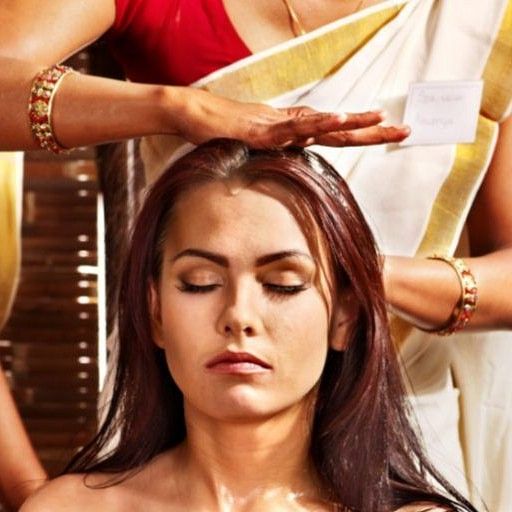- 7 Reasons to Discover Ultimate Serenity with Naturopathy
- Embrace Wellness Winter
- 7 Wellness Tips For Your Longevity
- World Mental Health Day: Essential Insights for Balanced Life
- 5 Ways to Achieve Optimal Digestive Health
- Exploring the Health Benefits of 5 Popular Types of Massages
- How Spas Rejuvenate the Body, Mind, and Soul
- What is Swedish Massage
- Valuka Sweda
- Januvasti
- Annalepam
- Navara Kizhi
- Shiro Vasti
- Udhwarthanam
- Podikizhi
- Pizhichil
- Upanaham
- Merudanda Vashti
- Netra Tarpana
- Greeva Pichu
- Greeva Vasti
- Merudanda Pichu
- What is Ayurveda?
- The Benefits of Practicing Ayurveda
- Ayurveda: An Alternative Medicine
- Techniques and Benefits of Shiro Abhyanga in Ayurveda
- The Ayurvedic Cleanse of Panchakarma
- How Padabhyangam Therapy Heals Your Body and Mind
- Elements in Ayurveda and their Significance
- Live The Tranquil Life
- Detox and Rejuvenate with Acupuncture
- Lifestyle Management with Yoga and Meditation
- A Unique Approach To A Healthy Diet
- Weight Management with Ayurveda
- Wellness Retreats to Celebrate Women's Day
- Best Stress Relief Techniques
- Benefits of Massage Therapy
- 10 Quick & Easy Fresh Juice Recipes
- Everything you need to know about Holistic Health Assessment
- Essence of Yoga
- Why Must You Practice Yoga Regularly?
- The Basics of Ayurveda
- Boost Your Immunity With Naturopathy Amidst The Pandemic
- 5 Ways To Bring Down The Risk Of Seasonal Diseases
- 5 Amazing Tips To Improve Your Immunity
- 4 Everyday Habits That Might Be Harming Your Gut Health
- Reiki: The Healing Touch
- Your Ultimate Guide To Chakra Meditation
- Embrace the Naturopathic Way of Life
- Best Therapies for Chronic Neck Pain
- 4 Things Not To Do After A Filling Meal
- 8 Things That Weaken Your Immune System
- Try These 12 Things to Beat Panic and Stay Calm
- Beat Stress With These Foods During COVID-19
- Diet and Depression: What to Eat, What to Avoid
- Is Depression Keeping You Sedentary? Here is what you can do
- A Low FODMAP Diet For Better Digestive Health
- Want to Increase Sperm Count? Go the Nature's Way
- Home Remedies to Manage your PCOS
- Try Ayurveda to get pregnant faster
- Try Fertility Yoga to Support Reproductive Health
- Should You Ditch Dairy Products For Weight Loss?
- 6 Principles of naturopathy you should know about
- 9 Home Remedies For Digestive Issues
- Ayurvedic Remedies to treat COVID-19
- Importance of Doshas
- Acupuncture: The perfect healing therapy to boost fertility
- Fighting COVID-19 with Ayurveda
- A positive attitude will help you deal with COVID-19
- Practice yoga to boost mental health during COVID-19
- What to do when taking a deep breath just isn't enough
- Four Things To Gift Your Dad This Father’s Day
- Simple Steps To Spend Your 4th Of July Weekend
- 5 Amazing Things to Do During This Fall When You Plan Your Trip
- 4 Therapies for women dealing with stress & anxiety
- Importance of Ayurvedic Treatment in The Modern World
- What is Naturopathy & how does it benefit you?
- 10 Winter Wellness Tips For Your Health
- Weekend Getaways & Health Benefits
- The Importance Of Having Corporate Retreats
- 6 Reasons Why You Should Go To Health and Wellness Retreat
- 6 Habits to Consider in New Years Resolutions
- 5 Tips to Welcome Healthy Spring Season
- 6 Wellness Tips to Reignite the Spark of Love this Valentine Day
- 6 Wellness Tips for Longevity
- Catskills Most Sought Destination for Wellness Lovers
- 5 Springtime Wellness Tips
- How Detoxing Your Body Can Contribute to Your Holistic Wellbeing
- Unlock Secrets of Longevity with Spring Rejuvenation
- World Health Day: 6 Ways To Embrace The Power of Good Health
- Things To Do Around The Bethel Woods Center of Arts
- 5 Healthy Habits to Attain Longevity
- Mother's Day Give Her Gift of Wellness
- How To Deal With Anxiety and Depression
- Yoga For Beginners
- How to Make the Most of International Yoga Day
- Benefits Of Shirodhara Therapy To Restore Your Wellbeing
- Stress Taking A Toll On Your Health?
- How a Wellness Retreat Can Help You Get Through Panic Attacks
- Elevating Your Mind, Body, and Soul with Effective Wellness Prog
- Unlock the Secret to Restful Nights: YO1's Insomnia Management P
- Tips for a Healthier Labor Day Weekend
- Why Choose a Wellness Retreat Over a Typical Holiday
- 5 Ways to Unlock Optimal Health and Wellness
- World Vegetarian Day Health Benefits
- Catskills Resort Perfect Wedding Venues
- Stress Management Program for Mind Body
- Role of Healthy Diet in Longevity
- Enhancing Couple Wellness this Valentine Day
- 6 Anxiety Management Tips
- Wellness Benefits of Spa Treatments
- Womens Wellness Retreat A Step by Step Guide
- Weight Management Why It Matters
- Tips for Spring Season
- Self Care Simple Strategies
- 7 Spring Season Foods to Boost Health
- How Yoga Can Improve Physical and Mental Health
- Top Natural Remedies for Spring Allergy Relief
- How Hydrotherapy Impact the Mind and Body
- Tips For Managing Daily Anxiety and Stress
- Celebrate International Yoga Day with Top 10 Yoga Poses
- 10 Nutritious Foods to Manage Type 2 Diabetes
- Meditation Techniques to Calm Anxious Mind
- What to Expect During the Ayurvedic Detox Program?
- Top 10 Benefits of Acupuncture Therapy
- What to Expect From Your First Yoga Retreat
- YO1 Resorts Featured in Smile 2 Movie
- Bethel Woods Center for the Arts: All You Need to Know
- Everything You Need to Know About Deep Tissue Massage
- Ways to Celebrate Labor Day
- Best Wellness Resorts in Catskills New York
- 5 Common Myths About Weight Management
The term Ayurveda means “the science of life,” where “Ayur” is life and “Veda” is knowledge.
Ayurvedic principles state that the cosmos are compiled of the “Pancha Maha Bhutas” also known as the “Five Great Elements.”
These elements originate from the “Pancha Tanmatra” known as sound (shabda), touch (sparsha), vision (roopa), taste (rasa), and smell (gandha). Although each element is a combination of all five Tanmatras, each shows a predominance of only one.
The first element is known as ether (akash), followed by air (vayu), fire (agni), water (jal/apas), and earth (prithvi). These elements are the core of Ayurvedic principles, as they represent ideas fundamental to nature and matter. Together, they are a collection of qualities that form the building blocks of nature.
Elements in Ayurveda
In order to understand Ayurveda, it is essential to first understand these five elements. According to Ayurveda, the components and functioning of the cosmos are similar to our body components and its functions.
With the body, each element is associated with different tissues and functions. With the mind, the elements relate to personality and characteristic traits. In medicine, the elements govern their actions. Hence, having knowledge of the five elements opens the doorway to understanding creation itself.
Ether (Akash)

This element comes first because it is the subtlest of all five. Ether originates from shabda, which is the tanmatra of sound. It is the primordial space from which a vibration emerges long before it takes the form of sound in the ear. Sound and ether are inseparable, so the ear is considered to be the sense organ of ether. The mouth is its organ of action.
Hearing loss and loss of voice is the result of a disturbance in the functions of the ether element. The ether element is present in the body as the empty space between cells. The hollowness of the empty intestines, bladder, blood vessels, and the lungs are filled with ether.
An etheric person demonstrates qualities of imagination, expansion, subtleness, and dreaminess. They can also be elusive and passive at times.
Air (Vayu)

This is the second element because it evolves from ether. When the potential within empty space becomes active, the result is air. It represents the capacity for motion and all forces and movements which occur as a result.
Air originates from Sparsha, the tanmatra of touch. It is the potential of the touch experience in its most subtle form. Touch and air are inseparable, so the skin which receives the touch is considered to be the sense organ of the element air. The hands through which we reach out are its organ of action.
We associate air in our body with the air we breathe. Ancient Rishis recognized this air as the immediate source of life; that which is synonymous with prana (life energy). Air is described in five forms according to its direction of movement. These are inward (prana), outward (vyana), upward (udana), downward (apana), and the force that stabilizes these movements toward the center (samana). These five movements are known as the vayus and the pranas.
In the body, air is present in the form of motion. Its force allows the blood to circulate, breath to move, nerve impulses to travel, thoughts to flow, and joints to propel movement. Disorders of tactile perception and those of grasping are the result of vitiation of the air element.
People with a strong air element in their constitution are agile and tend to move quickly and easily. By nature, they are cheerful and enthusiastic.
Fire (Agni)

Ether provides fire the space to burn while air provides fire the capacity to burn. Hence, the third element is fire which evolves from ether and air. Just as the sun is the generator of energy for the earth, fire is the generator of energy for the body.
Fire originates from Roopa, the tanmatra of vision. Roopa means form or colour, both of which are the result of perception. This is why fire is the primordial form of perception, light, and vision. It provides the light for perception. The eyes are the vehicle through which light is received and perception takes place. Hence, eyes are considered to be the sense organ of fire.
Disorders of visual perception are a result of a disturbance of the fire element. It is through the feet that we act upon what we see. By using the feet, a person can change his direction or intensity of progress based on perception. Hence, the organ of action associated with the fire element is the feet.
Fire represents light, heat, energy, metabolism, and the power of transformation. People with a strong fire element in their constitution have leadership qualities and are adventurous, brave, confident, motivated, energetic, and progressive. They are eager in pursuing goals and are full of youthful spirit.
Water (Jal/Apas)

This is the fourth element that comes into existence out of the previous three. Fire causes air to become dense, giving us the element of water. Water is the protector of the body providing its most basic nourishment. It protects against the dissolution of ether, the roughness of air, and the heat of fire. It also soothes pain and inflammation in the body.
Water is the first element that we can taste. It originates from Rasa, the tanmatra of taste. In this context, it is the causation of the experience of taste (but not taste itself). Taste depends on water for its manifestation, so disorders of the ability to taste are an imbalance of the water element.
Since the tongue is the vehicle through which the rasa tanmatra manifests, it is considered to be the sense organ of water. The taste buds of the tongue work only in the presence of water or saliva. This means that if there is no water, there is no taste.
The organ of action associated with the water element is the urethra. Through the male urethra, potent reproductive fluid is expelled from the body. The male and female urethra also expel water in the form of urine.
People with abundant water in their constitution show strong traits of compassion and empathy, since water is connected to emotions.
Earth (Prithvi)

The fifth element of the five great elements is prithvi, because it evolves out of the other four, hence containing the essence of these elements within it. Ether provides earth with the space to exist and air provides earth with subtle movements. Fire is latent within the earth bound by chemical bonds, and water is inherent within the earth as a bridge between gaseous and solid matter.
The earth element represents the matter of the universe. It gives form to the human body and all creation. This structure provided by the earth is the conduit through which all other elements flow.
Earth originates from gandha, the tanmatra of smell. The state of the earth element in the body and the capacity to smell have a special relationship. Gandha enables the experience of smell, while the earth element enables smell to be experienced in the body. The nose is the vehicle through which the gandha tanmatra manifests, so it is considered to be the sense organ of earth.
Through consumption and defecation, the balance of earth in the body is regulated. This makes the rectum the organ of action associated with earth. Disorders of the ability to smell are the result of vitiation of earth in the body.
A person who demonstrates a strong earth element is someone who is methodical, reliable, stable, and perhaps stubborn.
In the evolution of elements, ether is the subtlest of all. As ether becomes active it evolves into air. Ether and air give fire the space and capacity to burn. Fire causes the air to become dense and form water. This process continues until water gives us the earth element.
Hence, we see that in each evolution from one element to the next, nature becomes denser. All elements are born of the ether element and are contained in the earth element.
Reference Links
- https://www.ayurvedacollege.com/book/export/html/560
- https://blog.pureindianfoods.com/ayurvedic-doshas/
- http://www.ayurvedaamritvani.com/pancha-mahabhutas—five-great-elements.html
BLOG
GET IN TOUCH
Please take a moment to fill out the form below with your contact information. A YO1 Longevity & Health Resorts representative will reach out to you with additional information.


















